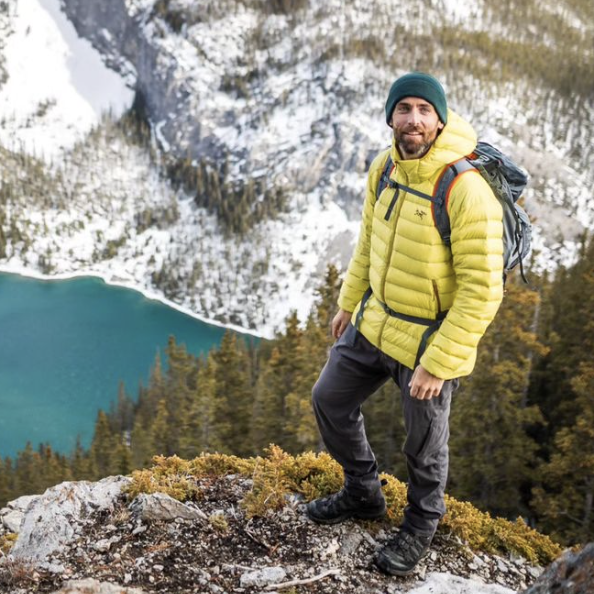Total Items: 0
Sub Total: $0.00
But here’s the kicker: your sleep system isn’t just for sleeping—it’s also what you’ll lug around all day. So, let’s dive into everything you need to know about crafting the perfect backcountry sleep setup, from sleeping pads to bags, and even pillows.
Your sleeping pad isn’t just a cushion; it’s your first line of defence against the cold ground. Here’s what you need to consider:
1. Sleeping Style
Are you a back sleeper, side sleeper, or a nighttime roller? Your choice of pad width and length depends on how you sleep. Static sleepers may find regular widths sufficient, but side sleepers or restless souls should consider wider pads for extra room.
2. Insulation (R-Value)
Sleeping pads come with an R-value that measures insulation. Higher numbers mean better insulation but often result in bulkier pads. A sweet spot for most backpackers is around 3–4, striking a balance between warmth and portability.
3. Durability and Material
Check the denier (D) rating of the pad’s fabric. A higher denier means tougher material, which is great for rough terrain but adds weight. Also, test how noisy the material is—no one wants a crinkly pad waking up their tentmates!
4. Inflation and Deflation
A well-designed valve system can make inflating and deflating your pad a breeze. Many pads now include inflation sacks, which save your breath, reduce moisture build-up inside the pad, and prolong its lifespan.
Sleeping bags are your cosy cocoon, but not all are created equal.
1. Temperature Ratings
Most sleeping bags list a comfort temperature, lower limit, and extreme rating. If you sleep cold, aim for the comfort rating; if you’re a warm sleeper, the lower limit is your go-to.
2. Down vs. Synthetic
• Down bags: Lightweight, packable, and warm, but pricier and less effective when wet.
• Synthetic bags: Heavier and bulkier but more affordable and better in damp conditions.
3. Shape and Size
• Mummy bags: More efficient, lighter, and warmer but restrictive for restless sleepers.
• Rectangular or quilt bags: Roomy and versatile, but less insulating.
4. Loft Ratings
A higher loft (e.g., 850 vs. 600) means better insulation with less weight and bulk. Investing in a high-loft bag can save space and effort, making your pack lighter and smaller.
A pillow might seem like a luxury item, but it can drastically improve your sleep quality.
• Inflatable pillows: Lightweight and packable, perfect for minimalist adventurers.
• Hybrid pillows: Combine foam or down tops with inflatable cores for a balance of comfort and portability.
• DIY option: Stuff your down jacket into its stuff sack for an ultralight solution.
Simon uses the Sea To Summit Spark III (updated version Sea to Summit Spark -9C/15F Down Sleeping Bag). If you're counting grams, but still count on a great night's sleep, the Spark may be the right bag for you. Filled with RDS-certified 850+ fill power goose down treated with a non-PFC Ultra-Dry Down treatment, the Spark is constructed with a technical hood and zipper draft tube to retain warmth. Comfort comes from a super-breathable 10 denier liner fabric, while a 10D shell with a non-PFC DWR plus a highly water-repellent hood and footbox fabric shed wind and condensation. Check out the full updated Spark Sleeping Bag range here.
The Nemo Tensor Ultralight Insulated Sleeping Pad is a firm staff favourite. It's excellent value for money with an innovative Spaceframe baffle design, which utilises low-stretch fabric trusses to create stable support and offer just the right amount of give - all while avoiding any wobbly waterbed feeling. Made with bluesign®-approved premium nylon fabrics, it’s both lightweight and highly resistant to punctures and tears. Inflating is effortless with the included Vortex pump sack, which minimizes effort, conserves breath at elevation, and reduces moisture buildup.
Specifications
Minimum Weight: 395 g
Size: 183 x 51 cm
Packed Weight: 477 g
Packed Size: 25.5 x 9.5 cm dia
R-Value: 2.8
Thickness: 3.5 in
Shape: Rectangular
Insulation: Aluminized Film
Perfect for gram counters, the best selling Aeros inflatable backpacking pillow inflates in just a couple of breaths and has a soft 20D stretch polyester exterior and a silent, contoured TPU air bladder for support and comfort. Inflation, adjustment, and deflation take seconds, thanks to the patent-pending multi-function mini valve.
Specifications
Dimensions: Regular: 36 x 26 x 12 cm; Large: 44 x 32 x 14 cm
Packed Size: Regular: 5.5 x 7.5 cm; Large: 2.1 x 3.1 in / 5.3 x 7.8 cm
Weight: Regular: 60g; Large:70g
Fabric: 20 Denier soft stretch-knit polyester is pleasant against your skin
Comes With: Ultra-Sil stuff sack
Dialling in your sleep setup is worth it. The right combination of warmth, comfort, and weight can transform your nights in the wild and set you up for successful, enjoyable days on the trail.
Still unsure? Swing by your local Wild Earth store to test sleeping pads and bags—or take a mini nap (we won’t judge). The trail is calling, and with the perfect sleep system, you’ll be ready to answer! Chat with our friendly team of Outdoor Gear Specialists in-store or online today and don’t forget to share your adventures with us on Instagram by tagging @wildearthaustralia and #mywildearth in your next post.
About the contributor:
 Simon Ennals is a Wild Earth ambassador, landscape photographer and outdoor enthusiast. Whether it's trail running, climbing or hiking you'll find Simon outdoors testing gear and exploring the Canadian Rockies where he resides. Follow his adventures on Instagram (@simonennals)
Simon Ennals is a Wild Earth ambassador, landscape photographer and outdoor enthusiast. Whether it's trail running, climbing or hiking you'll find Simon outdoors testing gear and exploring the Canadian Rockies where he resides. Follow his adventures on Instagram (@simonennals)